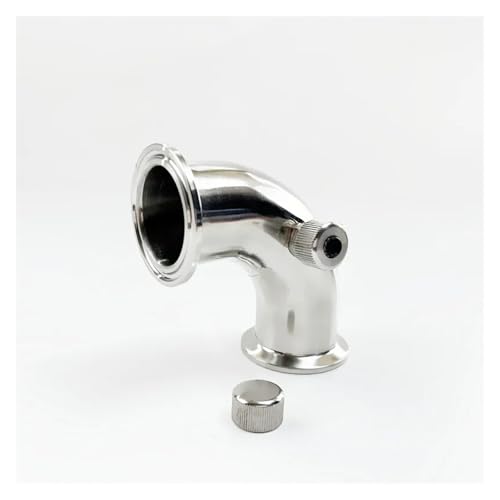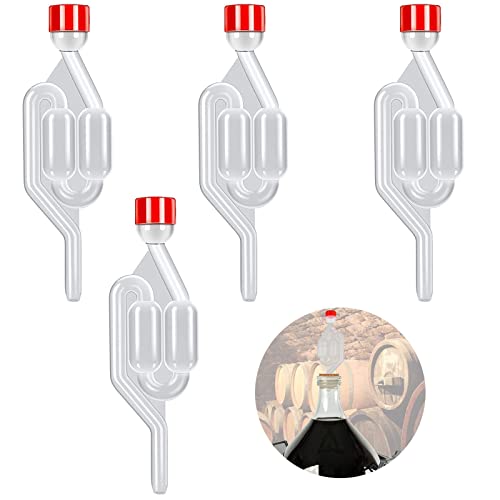designvoid
New Member
Morning all!
As stated I'm a total newbie - and I have a couple of questions that I was hoping some of the seasoned pro's could answer!
So I have brewed, bottled and tasted my first beer - I used a Coopers English Bitter Beer Kit that came with the equipment I was gifted. Everything seemed to go smoothly and the beer is perfectly drinkable, it's not going to win any awards but I'm happy with how it went and tatstes.
I have now got a second brew under way using the Festival Pride Of London Porter Beer Kit and it seems to be underway and nearing the middle of the primary fermantation and ready to chuck the hop pellets in!
So having gone through both of these I have the following questions:
1) both brews seemed to get very active within first 24/36 hours (I can see a very high 'tide mark' on the side of the fermementer) and then drops down to a slight frothy head with the odd bubble burting etc... I don't have an airock barrel I have the barrel that comes with the coopers starter set with the lid that can expand. So my question is - is this normal?
2) I potentially did something a bit daft with this second brew and gave it a good stir after 5 days as I was worried some of the yeast had just settled on the frith when I pitched it and that maybe all the sugars hadn't been mixed - have I done my brew harm? I sanitzed the spoon before stiring and only lifted the lid slightly...
3) With my first brew I used the 'carbonation' tablets that came with the starter kit for the secondary fermantaion in the bottles - they seemed to work well but there is a definite variation in some of the bottle in terms of taste and forthy head when poured... Is this to be expected? I mean the taste variations are negligable - a couple were a bit 'thin' tasting compared to others and didn't taste as 'full'. With the head, 99% have nice forthy heads that tsay nicely on the beer but the odd one or two seem 'headless'?
I'm sure all of this is just newbie worry but figured it would be good to ask!
Cheers!
As stated I'm a total newbie - and I have a couple of questions that I was hoping some of the seasoned pro's could answer!
So I have brewed, bottled and tasted my first beer - I used a Coopers English Bitter Beer Kit that came with the equipment I was gifted. Everything seemed to go smoothly and the beer is perfectly drinkable, it's not going to win any awards but I'm happy with how it went and tatstes.
I have now got a second brew under way using the Festival Pride Of London Porter Beer Kit and it seems to be underway and nearing the middle of the primary fermantation and ready to chuck the hop pellets in!
So having gone through both of these I have the following questions:
1) both brews seemed to get very active within first 24/36 hours (I can see a very high 'tide mark' on the side of the fermementer) and then drops down to a slight frothy head with the odd bubble burting etc... I don't have an airock barrel I have the barrel that comes with the coopers starter set with the lid that can expand. So my question is - is this normal?
2) I potentially did something a bit daft with this second brew and gave it a good stir after 5 days as I was worried some of the yeast had just settled on the frith when I pitched it and that maybe all the sugars hadn't been mixed - have I done my brew harm? I sanitzed the spoon before stiring and only lifted the lid slightly...
3) With my first brew I used the 'carbonation' tablets that came with the starter kit for the secondary fermantaion in the bottles - they seemed to work well but there is a definite variation in some of the bottle in terms of taste and forthy head when poured... Is this to be expected? I mean the taste variations are negligable - a couple were a bit 'thin' tasting compared to others and didn't taste as 'full'. With the head, 99% have nice forthy heads that tsay nicely on the beer but the odd one or two seem 'headless'?
I'm sure all of this is just newbie worry but figured it would be good to ask!
Cheers!













![BREWING THERMOMETER STICKERS ACCURATELY MONITOR FERMENTING BEER & WINE LIQUID TEMPERATURES 5PCS HOME BREW SPIRITS WINE LCD ADHESIVE [US]](https://m.media-amazon.com/images/I/311DDjo2X3L._SL500_.jpg)


























